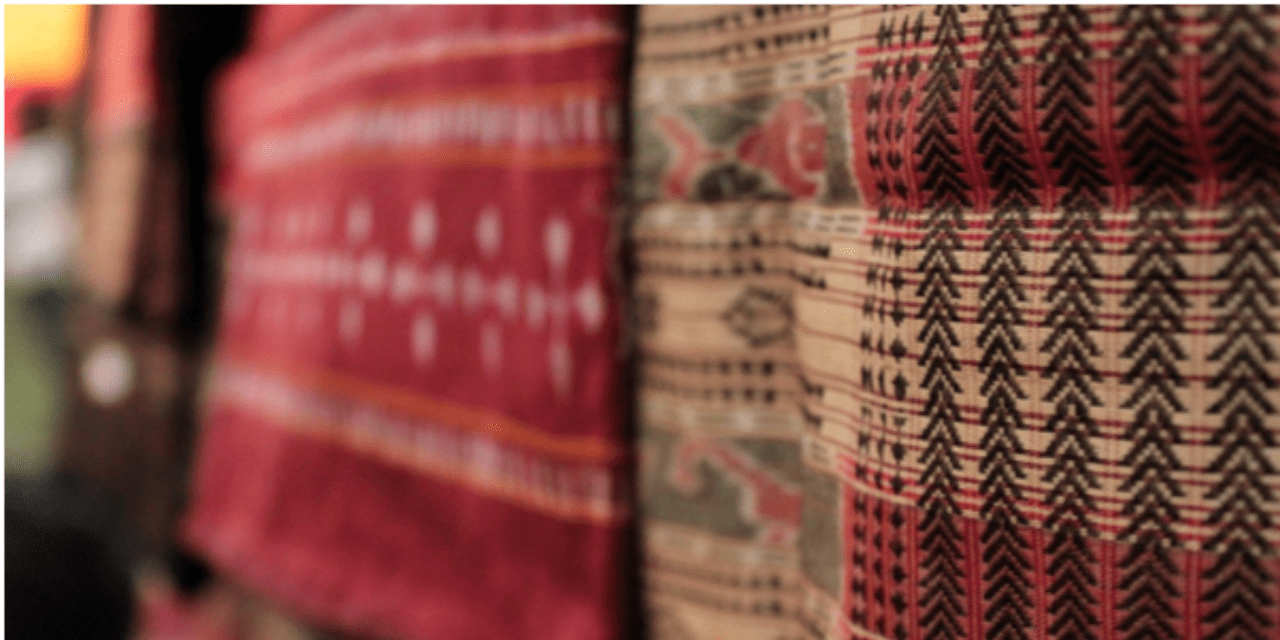HANDLOOM TEXTILE OF ODISHA HISTORY AND TYPES
Odisha, despite having a smaller population than most other States, has India’s second-largest weaver population. Odisha’s handloom variety is largely influenced by the State’s tribal communities, which is the third greatest in India. The State’s textiles represent its cultural identity, with exquisite weaves offering a unique identity. The lush and desired thread work, designs, and bright colours stand out in a crowd, make a clear fashion statement, and maybe carried down through generations, creating a prized heritage.
Odisha is famous for its silk ikat weaves, which are made using a complicated method called “bandha,” in which warp and weft threads are tie-dyed to form the motif on the loom as it is being woven. Lines of rudraksha beads, temple spires, animals and birds, fish, and seashells are common design elements.
Tassar silk is produced in Sambalpur, Mayurbhanj, Nuapatna, and Berhampur and it has an unrivalled lustre, shine, and texture. The idols in the Jagannath Temple are dressed with a special silk cloth from Nuapatna in the Cuttack district, which is embroidered with verses from the Gitagovinda. Other than sarees, the experts are skilled in the centuries-old technique of silkworm breeding and produce silk ties, scarfs, interiors, and garment fabrics.
History of Odisha’s Handloom Weaving
Handloom weaving in Odisha dates from 600 BC, as per the art historians. Lord Jagannath is associated with this art form’s heritage.
White, black, yellow, and red are the four major colours utilised in keeping with tradition, with green being included subsequently. According to the Vedas and the Gods, these colours symbolise the past, present, and future. This is also possible that the Ikat silk art originated from a replica of far older temple construction.
The draping of garments is reflected in the human forms carved on the age-old temples. The locally distinctive handlooms, which are generally woven in cotton and silk, feature a broad range of styles, colours, patterns, and symbols, including plants, birds, animals, temples, and geometric shapes, which together reflect the Odisha’s scenic beauty.
According to legend, Jayadeva, a famous poet from the 12th century, presented Lord Jagannath with his ‘Gitagovinda’ in the form of fabrics. He had them woven in his hometown of Kenduli, where the ‘Gitagovinda’ verses were embroidered into the fabric.
The King of Puri then gave an order for Gitagovinda materials to be supplied by Nuapatna(Tigiria). Several cotton materials are utilised in the everyday ceremonies of the deities, in addition to Gitagovinda Khandua Patta (silk).
Types of Handloom Textiles
Sambalpuri Ikat:
The sarees of Sambalpuri are among India’s most beautiful sarees. West Odisha produces these kinds of sarees, primarily in the areas of Sambalpur, Bargarh, Boudh, Balangir and Sonepur. The Sambalpuri Sarees are handwoven from every single thread. There are no machines employed in any of the procedures associated with weaving a saree; everything is done by hand.
Sambalpuri fabrics include geometric designs, landscapes, portraits, as well as other patterns including sankha (shell), chakra (wheel), and a number of phula(flower), all of which represent the ‘baandha’ form of craft.
Bomkai Silk:
Bomkai often referred to as Sonepuri, is a unique textile woven on a pit loom that combines two of Odisha’s most famous textile elements. Bomkai is a pit loom technique that uses extra wefts. Ikat and embroidery have been woven together to create this piece. The pallus are usually defined by exquisite thread work and the borders are generally in different hues. The designs on the Bomkai saree are influenced by nature and tribal artwork, providing the saree with a unique aesthetic look that is ideal for royalty. Cotton and silk Bomkai sarees are offered. Bomkai is a handloom textile with an embedded GI tag which is also known as ‘Sonepuri’ material. It is produced by skilled craftsmen in Sonepur. Bomkai sarees are a must-have for any great saree collection, according to fashionistas.
Berhampuri Paata:
Berhampuri Saree or Berhampuri Patta, also referred as ‘Phoda Kumbha,’ is a GI product from Berhampur of Odisha, popularly called as the Silk City of India.Its distinguishing characteristic is that it includes a similar ‘joda’ for males.It is made using a 200-year-old traditional Odisha weaving technique.There are two types of temples or kumbha designs: phoda and badhi.The zari borders are quite stunning.They are traditionally worn during marriages and other auspicious events.Additional feature of this paata is that it is draped over Lord Jagannath, Lord Balabhadra, and Devi Subhadra in the Jagannath temple of Puri.
Khandua Paata:
Khandua Sarees (Maniabandi or Kataki) date from the twelfth century and are devoted to Lord Jagannath of Puri temple, one among India’s holiest locations.The fabric draped in the bottom part of the body is referred to as ‘Khandua’ in Odia.It’s a classic hand-woven saree made with pure tussar yarns and woven using wooden looms.This is also known for its ikat (bandha).It is frequently worn by women at weddings.
Kotpad cotton
This fabric with a GI tag was made by the tribal people of Kotpad village in Koraput and is known for being coloured naturally.Colours are obtained from vegetables, with maroon and black being the most common dyes.The first GI tag was given to these Odisha sarees out of a group of many.
Cotton sarees having solid borders and pata anchal are typically used for this. Cotton yarns, tussar silk, and aul (madder) tree roots, are used to create the luxurious textures.The Gitagovinda texts engraved on Khandua Paata are well-known.These colours come from sal trees and are usually red or orange in colour. Maniabandhaand Cuttak are the origins of this textile, which is a recognised GI.
The majority of Odisha (Orissa) handloom fabrics are woven in brilliant and vibrant hues.Synthetic colours have replaced vegetable dyes, and the earlier commands a premium wherever they are accessible.
By Somasree Roy
References:
https://sambadenglish.com/make-a-style-statement-with-odishas-vibrant-weaves/
https://craftscollection.in/blogs/indian-art/history-of-weaving-in-odisha
http://www.bhubaneswarbuzz.com/updates/travel-tourism/odisha-handlooms-international-fame

